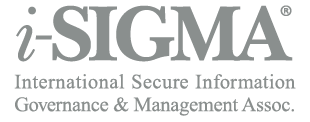Ethics Enforcement Differentiates NAID and PRISM International from other Organizations
July 18, 2019
It is not unusual for a trade association to have a Code of Ethics. They all do, and
they are quick to point to them as standards to which they hold their members.
When pressed, however, one soon finds that most of those same organizations
have no process for reporting or investigating violations and no formal means of
enforcing them.
That is not the case with i-SIGMA. In addition to the i-SIGMA Code of Ethics and
just as important is the i-SIGMA Complaint Resolution Process – a formal system
that provides a method for members or the general public to report a violation and
a formal system to investigate and refer disciplinary action to the i-SIGMA Board of
Directors.
“It may seem divisive”, says i-SIGMA CEO Bob Johnson, “but we encourage
members to file a complaint if they see any organization putting the industry or the
association at risk. Our industry relies on integrity and the Code of Ethics is there to
confront actions that diminish it.”
This is how it works:
1. If an ethical transgression is suspected, consult the i-SIGMA Code of Ethics to
identify the violation.
2. Complete and submit the i-SIGMA Ethics Complaint Form. Anonymity is
respected if requested.
3. The Complaint Resolution Council (CRC) reviews the complaint to determine if
it should be put on their docket (usually based on the evidence).
4. If the CRC determines an investigation is warranted both complainant and
respondent are separately interviewed.
5. Once complete, the CRC makes a recommendation to the i-SIGMA Board of
Directors. The Board will either approve, modify, or decline the recommendation
presented. The decision can include a number of things from exoneration,
financial penalty, and up to permanent suspension of membership (for more
information please refer to the CRC Guidelines).
Proving a Claim
“The most common challenge to those reporting a violation is the quality of the
proof,” says Johnson.
Johnson describes a complaint where a member sent in photos of a competitor
leaving a bin unattended, claiming it showed a clear ethics violation (as well as a
violation of NAID AAA Certification). He described the pictures as “troubling.” In the
interview, however, the responding company simply said the attendant was outside
the frame of the picture. Johnson says it was impossible to prove otherwise.
“The best evidence is usually date-stamped, a screenshot, or where there is video
footage,” says Johnson. “A false claim on a website or a video showing a continuous
stream of events is hard to refute.”
Johnson also maintains that proof is NOT always needed to get bad actors to
change their ways. “When a company is contacted by i-SIGMA requesting they
address an ethics complaint, even if absolute proof is lacking, they often correct the
action because they know someone’s watching.”
